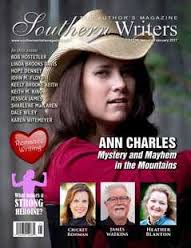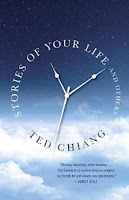by
Gary Fearon, Creative Director,
Southern Writers Magazine
For my money, there is no greater example of artistic collaboration than movies. Where else do writing, music, acting, directing, choreography, cinematography, set design, editing, etc all come together as one? The exhaustive list of credits at the end of any feature film catalogs hundreds and sometimes thousands of people who all contributed to the project in a significant way.
Of course, it all begins with a story. When the Academy Award nominations are announced each year, it's an interesting exercise to look into the written origins of each Best Picture nominee. In alphabetical order, here are the ones that made the grade for the February 26, 2017 telecast:
ARRIVAL
This Sci-Fi flick, starring Amy Adams as an interpreter commissioned to decode alien communications, was based on a 2010 short story called
Story of Your Life by Ted Chiang. One reviewer, noting significant differences between the film and the original story, made the insightful observation that it's like two friends telling you about the same event from their individual viewpoints.
FENCES
In 1950s Pittsburgh, an ex-con blames discrimination for his failures and alienates his family through stubbornness and drinking. Denzel Washington and Viola Davis reprise their roles from the Pulitzer Prize winning play
Fences by August Wilson.
HACKSAW RIDGE
This WWII tale about a combat medic who refuses to carry a gun because of his religious convictions but earns the Medal of Honor is based on real-life hero Desmond Doss. A 2004 documentary film called
The Conscientious Objector and a 1960s biography,
The Unlikeliest Hero, led Mel Gibson to put the story on the silver screen.
HELL OR HIGH WATER
Jeff Bridges plays an about-to-retire Texas ranger working his last case, tracking bank robbers. This original script was one of the "most-liked screenplays yet to be produced" in a 2012 survey known as The Black List. Published every December, this list has been influential in getting other Oscar picks produced, including recent Best Picture winners
Argo, The King's Speech,
Slumdog Millionaire, and last year's top dog,
Spotlight.
 HIDDEN FIGURES
HIDDEN FIGURES
NASA's first female mathematicians and America's early victories in space add up to an out-of-this-world history lesson in this movie based on Margot Lee Shetterly's
Hidden Figures: The Story of the African-American Women Who Helped Win the Space Race. She began research and writing in 2010 and sold the film rights before the book was published this year. Some liberties were taken in the movie for dramatic purposes, including portraying astronaut John Glenn as a much younger man than he actually was at the time.
LA LA LAND
This acclaimed musical romantic comedy/drama was written and directed by Damien Chazelle, whose
Whiplash also caught the eye of the Academy two years ago. Emma Stone and Ryan Gosling carry this well-told tale of an actress and a musician trying to make it in Tinsel Town. While completely original, it draws its inspiration from the spirit of every Hollywood musical, romance, comedy, and drama Chazelle pays affectionate homage to.
LION
Based on Saroo Brierley's memoir
A Long Way Home, one challenge the filmmakers had was to adapt the book
—which primarily focused on online research
—into a dramatic chronicle of a lost Indian boy who doesn't know where he's from when he falls asleep and wakes up in Australia.
MANCHESTER BY THE SEA
A handyman's past comes back to haunt him in this original screenplay written by its director, Kenneth Lonergan, who also wrote a polar-opposite
The Adventures of Rocky and Bullwinkle (2000). It's total fiction, but there is a town called Manchester-by-the-Sea in Massachusetts, where this atmospheric film was shot.
MOONLIGHT
The struggles of a bullied child begin a raw portrayal of three stages of his life, with lots of drugs and sex. This is based on a semi-autobiographical play called
In Moonlight Black Boys Looks Blue by Tarell Alvin McCraney.
So, of the nine Best Picture nominees this year, four began as books, two were stage plays, and three were original screenplays. As you watch any of these movies, and as you cheer on your favorites this Sunday on ABC, I hope you'll feel a sense of pride as the whole world honors the magic of storytelling, which always begins with a storyteller.
I also hope you'll enjoy my tongue-in-cheek musical tribute to this year's Best Picture nominees. As a writing challenge, I find it a fun project each February to turn one of the Best Song nominees into a parody that fits the flicks. Pass the popcorn!
bit.ly/OscarsParody2017



























